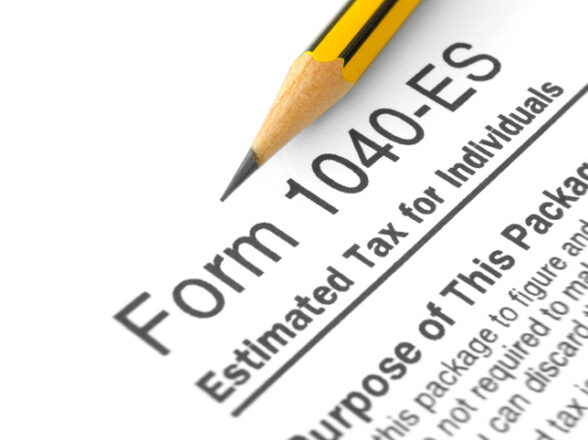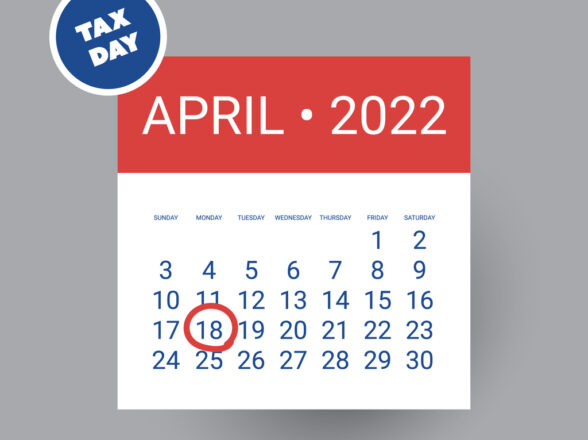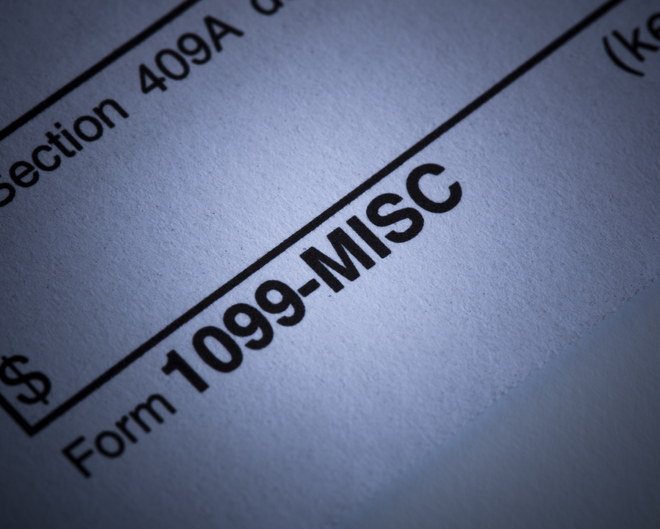Blog
When Should I Exercise My Company Stock Options?

When Should You Exercise or Sell Your Company Stock Options?
One of the most prolific questions we are asked here at Infinium when a client has stock options. Unfortunately, this is one of those ‘rear-view mirror’ situations where you will know with 100% certainty after the fact if you got that call correct. Everyone’s goal is to maximize the net value to themselves in considering this decision, but clearly there are a multitude of factors that an investor should ponder before exercising and/or selling company stock options.
Let’s take a moment add some context around the whole idea of an employer who grants stock options to their employees. If you are fortunate enough to have received stock options, or maybe considering taking a new job where this is the case, it pays to educate yourself on the inner workings of company stock options so you can have the confident to move forward when the time is right.
Employee stock options enable you (the investor) to buy company shares at a fixed price, even when the exercise price (see the definition below) is lower than the market value. The tax code in the the United States is very clear about how an employee is to report transactions when it comes to the exercise and sale of stock options, but getting it right is not necessarily an easy task.
Beyond tax complexities, there’s the fear of missing out on an increasing market value. Or the fear of exercising too early and being seen as a non-team player. How are you to reconcile such uncertainties, fears, and hesitations?
Discussed here is a comprehensive strategy for exercising your stock options to reap maximum benefits – all without losing your mind.
But first, let’s define key company stock option terminologies to ensure we’re on the same page.
Basic Company Stock Options Terminologies
- Grant date – The date a company issues the stock options to you (the employee)
- Vesting date – The date when the employee receives actual ownership of the stock options. In other words, it’s the date the employee becomes eligible to exercise (purchase) a specific number of the stock options.
- Exercise price – The price at which the options are issued. Or rather, the value at which employees can purchase company shares once their stock options are vested. It’s also known as the strike price.
- Expiration – The date at which the shares expire. Or the date an employee can no longer exercise their stock options. It’s usually up to 10 years after the grant date or 90 days after leaving the company.
What Is a Stock Option?
Stock options are some form of long-term employee compensation.
They are issued based on the employee’s rank and tenure. Their value increases with the increase in the company’s stock price. The employee, therefore, enjoys a profit on selling their options when the current stock price exceeds the exercise price.
For example, if you (the employee slush investor) receive 200 stock options at $10, the exercise price is $10. Once these options vest, you can purchase company shares – in this case at $10 – and:
- Exercise-and-hold transaction – Pay cash for the company shares, brokerage commission, other fees, and taxes owed. The strategy is ideal if you have the money to cover the said cost and you believe in the company’s prospects.
- Exercise-and-sell-to-cover transaction – Sell shares to cover the stock options costs, brokerage commissions, other fees, and taxes. The strategy is suitable for investors who believe in the company’s potential but lacks or don’t want to use out-of-pocket money to complete the transaction.
- Exercise-and-sell transaction – Sell all the shares after paying all the costs. The strategy is ideal for investors who want to diversify their investment portfolios. Or those who feel the stock options are overvalued.
- Hold your stock options – Wait for stock options to hike in value before exercising. This strategy is ideal when the current stock price is lower than the strike price.
Most people keep some shares as their investment portfolio and sell the rest.
If, say, you sell the options when the stock price is $30, you’ll receive a profit of $20 per share. The said profit is treated as your income and is factored in your tax returns.
How Company Stock Options Work
On the grant date, your employer hands you a stock option contract. The contract highlights the number of company shares you can buy at the strike price once your options vest. It also designates the expiration date past which you can’t exercise your options.
Your company may implement a vesting schedule where you’ll earn the options over time. For example, if you’re provided with 200 stock options, you may receive 50 each year for four years. That way, if you leave the company before your options fully vest, you forfeit any unvested stock options.
Overall, stock options align your interests with those of your employer, providing an incentive to work towards driving the company’s success.
Types of Company Stock Options
There are two types of company stock options, as discussed below.
Incentive stock options (ISO)
ISOs (also known as qualified or statutory stock options) are issued to employees exclusively. They are non-transferable, except for the death of the employee.
Statutory stock options are not taxable at the exercise date. However, the difference between the exercise price and the fair stock market price is subject to the alternative minimum tax.
If the options are held for 1+ years before the sale date, the resulting profit is taxable at long-term capital gain rates.
Non-Qualified options (NQSO)
NQSOs (sometimes referred to as non-statutory stock options) are available for employees, investors, and consultants. They are transferable to family members, charities, or trust funds that benefit the recipient.
The difference between the strike price and fair market value is subject to ordinary income tax once the options are exercised. Any gains at the sale date are taxed at the capital gains rate.
Strategies for When to Exercise Your Company Stock Options
As I mentioned at the top of this post, the thought process one goes through in order to figure out how to optimize the value of your stock options can be quite complex. We encourage our clients to understand and accept that you will need good timing, and maybe a bit of luck, to accomplish this goal. Sometimes, the world is in complete alignment and you end up making what turns out to be a great decision when you exercise and/or sell the resulting stock. Other times, it feels like you just can’t win. Take solace in the fact that a well-reasoned approach to handling your stock options is the starting point – control what you can control – and let the chips fall where they may. Don’t kick yourself if the results are less than optimal, especially if you have done all you can do to affect the outcome as best as you can.
Generally, you can exercise your stock options at any time upon vesting and before the expiration date. If you remain employed at the company, that duration may span ten years. If leaving the employer, take note of the “post-termination exercise period.” Or rather, the time frame provisioned in the grant contract to exercise vested options post-termination.
During the stipulated, say 10-year window, consider the following to determine when to exercise your stock options.
#1: Whether the company stock options have value
You should only exercise your stock options if they are “in the money” or have value. That is when the exercise price is lower than the market value of your company stocks.
In such a case, you can exercise your options at the relatively lower strike price and:
- Sell all or some of the shares on the trade market and pocket the profit
- Hold onto your options – especially if you believe in the company’s prospects. Holding your options will see their value increase with the increase in the price of your company’s stocks. It also helps put off tax consequences.
- (Be sure to exercise the options before the expiration date.)
#2: Whether your company is private or public
Private company shares aren’t traded on the stock market. As such, you’ll have to use out-of-pocket cash to cover the transaction costs. You’ll also risk holding onto illiquid shares that might take years before undergoing any liquidity events, such as a public offering.
If a private company files for an IPO, it could present the perfect opportunity to exercise ISO options. After all, incentive stock options are subject to two years holding past grants and one-year holding past exercise to receive favorable tax treatment.
Think about it.
After filing an IPO, it takes a company some months to prepare before the listing. Upon listing, the company employees may be restricted from selling their shares for about six months. As such, exercising your stock options when your company is filing for an IPO may see the post-lock-up period coincide with the time your shares qualify for preferential tax treatment.
#3: Whether exercising fits with your current financial situation
The best time to exercise your options is when it works for your unique income goals.
For instance, if your income is more than enough to cover your expenses and residual income requirements, you may not require additional cash flow from exercising and selling your shares. In such a case: you can hold your options, giving your company’s stock price time to rise.
On the other end, you may need additional cash, say, to purchase a home or fund education. In which case, exercising your company stock options and selling the shares may be handy.
#4: Whether you’re overinvested in your company stock
Individual stock is a risky investment. The company can go to zero, especially in a recession. And if that happens, you’ll not only lose your job and a portion of your pension but also lose your nest egg.
So consider your financial portfolio and asset allocation.
And if you’re overly invested in your company shares, consider:
- Exercising your options
- Selling some of the shares
- And using the proceeds to fund other assets, a.k.a. diversify your portfolio.
As a rule: anytime you have more than 20% of your investment portfolio in one stock or investment, that is considered a ‘concentrated’ position. I like to say that concentration can make you rich, it can also lead to a lot of heartache if your holding loses a lot of value.
#5: The expiration date
Stock options follow a vesting schedule that may last up to 10 years. Some companies provide even shorter (1-4 years) periods. And that for employees who remain in the company long-term.
If you resign, retire, or leave the company for some reason, you may only have three months to exercise your options.
Your company may allow you to exercise your stocks at the expiration date, but only if they are “in the money.”
But always strive to exercise your options before they expire.
#6: Whether it’s sensible for your taxes
Depending on the type of company stock options you own, consider varied tax treatments: capital gain tax, ordinary income tax, and alternative minimum tax.
When you exercise your non-statutory options and hold the shares for 1+ years, your post-exercise share appreciation may qualify for the long-term capital gain tax rate. The tax can be 0% if your taxable income is a maximum of $78,750 or $39,375 for singles.
In contrast, if you sell your non-statutory shares after a short period, your gains are taxed at an ordinary rate, which is maxed at 37%. Plus, you’ll still awe the Medicare and Social Security taxes at a rate of 1.45-7.65% depending on your income level.
The rules are stricter for incentive stock options. To qualify for long-term capital gain tax rates (maxed at 20%), you must sell your ISOs shares more than a year after the exercise date and more than two years after the grant date.
Your gain is considered income for alternative minimum tax (AMT) purposes. And higher-income investors may awe Medicare surtax on their net investment income in addition to the regular income tax. Consult with an experienced financial advisor to understand whether the situation applies to you.
If you sell your shares in the same year you exercised your options: you don’t need to factor in the AMT adjustment. Your taxes will be calculated at an ordinary rate.
If your ISOs stocks fall within the current year, you can sell them to avoid AMT.
Should you exercise early?
Some companies allow employees to exercise stock options before they vest. However, the employee won’t receive ownership of the shares until the vesting date.
On the upside, this option starts the clock for your statutory stock options to receive favorable tax treatment. It may also help you sidestep taxes by filing an 83b election request within 30 days of stock exercise. Such a request instructs the IRS to recognize your income as it is before your shares appreciate further.
On the downside, your shares may decline in value leading to a loss.
Ask A Financial Advisor
Whatever you decide to do, try not to go it alone. Whether it’s us here at Infinium, or your own trusted professional, having a partner in making these decisions will always help you to optimize your outcomes. To schedule a time with our team to discuss your company stock options, click HERE.











































































































